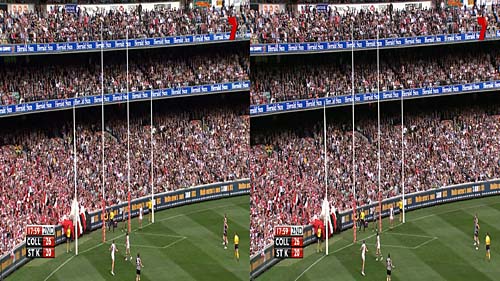I try not to litter this blog with my political views, except when they are relevant to home entertainment stuff. But if anyone is interested, I’ve had a piece published on Unleashed/The Drum on the ABC website in which I argue for Army exceptionalism.
-
Feel free to email me at scdawson [at] hifi-writer.com. I shall assume that emails sent to me here can be freely posted by me unless you state otherwise. -
Recent Posts
Recent comments
Blogroll
On This Site
Categories
Archives
- February 2017 (1)
- July 2016 (3)
- June 2016 (1)
- February 2016 (2)
- January 2016 (3)
- March 2015 (1)
- February 2015 (4)
- January 2015 (2)
- August 2014 (3)
- July 2014 (2)
- May 2014 (1)
- March 2014 (2)
- February 2014 (2)
- January 2014 (2)
- November 2013 (7)
- September 2013 (2)
- August 2013 (4)
- July 2013 (1)
- June 2013 (2)
- May 2013 (2)
- April 2013 (7)
- March 2013 (4)
- February 2013 (11)
- January 2013 (6)
- December 2012 (4)
- November 2012 (1)
- October 2012 (2)
- September 2012 (4)
- August 2012 (7)
- July 2012 (5)
- June 2012 (9)
- May 2012 (12)
- April 2012 (15)
- March 2012 (8)
- February 2012 (5)
- December 2011 (4)
- November 2011 (2)
- October 2011 (2)
- September 2011 (7)
- August 2011 (7)
- July 2011 (7)
- June 2011 (9)
- May 2011 (10)
- April 2011 (9)
- March 2011 (11)
- February 2011 (9)
- January 2011 (19)
- December 2010 (16)
- November 2010 (11)
- October 2010 (17)
- September 2010 (13)
- August 2010 (31)
- July 2010 (26)
- June 2010 (17)
- May 2010 (10)
- April 2010 (28)
- March 2010 (38)
- February 2010 (21)
- January 2010 (10)
- December 2009 (6)
- November 2009 (4)
- October 2009 (24)
- September 2009 (17)
- August 2009 (7)
- July 2009 (4)
- June 2009 (15)
- May 2009 (3)
- April 2009 (14)
- March 2009 (8)
- February 2009 (18)
- January 2009 (9)
- December 2008 (4)
- November 2008 (10)
- October 2008 (12)
- September 2008 (7)
- August 2008 (13)
- July 2008 (13)
- June 2008 (8)
- May 2008 (5)
- April 2008 (2)
- March 2008 (2)
- February 2008 (8)
- January 2008 (6)
- December 2007 (6)
- November 2007 (11)
- September 2007 (3)
- June 2007 (3)
- May 2007 (5)
- April 2007 (11)
- March 2007 (1)
- November 2006 (9)
- October 2006 (2)
- September 2006 (1)
- August 2006 (5)
- July 2006 (1)
- June 2006 (6)
- May 2006 (2)
- April 2006 (4)
- March 2006 (3)
- December 2005 (2)
- August 2005 (10)
- March 2005 (4)
- February 2005 (8)
- November 2004 (3)
- October 2004 (6)
- September 2004 (4)
- August 2004 (16)
- May 2004 (5)
- April 2004 (10)
- March 2004 (14)
- February 2004 (16)
- January 2004 (5)
- December 2003 (8)
- November 2003 (8)
- October 2003 (16)
- September 2003 (25)
- August 2003 (24)
- July 2003 (32)
QR Code
QR Code for this Blog. Scan it with your smart phone to be connected wherever you are:






